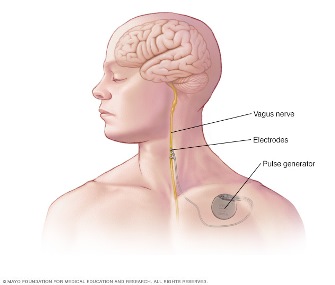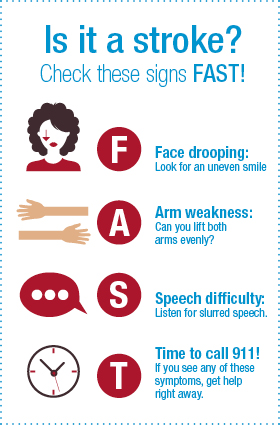Neurology (Brain & Nerves)
Epilepsy Care & Treatment in Red Wing
Epilepsy is a central nervous system disorder in which nerve cell activity in the brain becomes disrupted, causing seizures or periods of unusual behavior, sensations and, sometimes, loss of consciousness. Medications typically are the first line of treatment for patients with epilepsy. Our Neurology team in Red Wing, Minnesota, has expertise in nonmedication management, including vagus nerve stimulator implantation.
Learn more about epilepsy care and treatment:
- Seizure symptoms and types
- Lennox-Gastaut syndrome
- Vagus nerve stimulation
- When to see a healthcare professional
- Epilepsy facts
Seizure symptoms and types
Seizure symptoms can vary and include:
- Temporary confusion
- Uncontrollable twitching or jerking movements of the arms and legs
- Loss of consciousness or awareness
- Psychic symptoms, such as fear, anxiety or déjà vu.
Seizures typically are classified as focal or generalized, based on the abnormal brain activity.
Focal seizures
Seizures that appear to result from abnormal activity in just one area of your brain are called focal, or partial seizures. Symptoms of focal seizures may be confused with other neurological disorders, such as migraine, narcolepsy or mental illness. A thorough examination and testing are needed to distinguish epilepsy from other disorders.
Types of focal seizures include:
- Focal seizures without loss of consciousness
Once called simple partial seizures, these seizures don't cause a loss of consciousness. They may alter emotions or change the way things look, smell, feel, taste or sound. They also may result in involuntary jerking of a body part, such as an arm or leg, and spontaneous sensory symptoms such as tingling, dizziness and flashing lights. - Focal seizures with impaired awareness
Once called complex partial seizures, these seizures involve a change or loss of consciousness or awareness. During a complex partial seizure, you may stare into space and not respond normally to your environment or perform repetitive movements, such as hand rubbing, chewing, swallowing or walking in circles.
Generalized seizures
Seizures that appear to involve all areas of the brain are called generalized seizures, including:
- Absence seizures
Absence seizures, previously known as petit mal seizures, often occur in children and are characterized by staring into space or subtle body movements, such as eye blinking or lip smacking. These seizures may occur in clusters and cause a brief loss of awareness. - Tonic seizures
Tonic seizures cause stiffening of your muscles. These seizures usually affect muscles in your back, arms and legs, and may cause you to fall to the ground. - Atonic seizures
Atonic seizures, also known as drop seizures, cause a loss of muscle control, which may cause you to suddenly collapse or fall down. - Clonic seizures
Clonic seizures are associated with repeated or rhythmic, jerking muscle movements. These seizures usually affect the neck, face and arms. - Myoclonic seizures
Myoclonic seizures usually appear as sudden brief jerks or twitches of your arms and legs. - Tonic-clonic seizures
Tonic-clonic seizures, previously known as grand mal seizures, are the most dramatic type of epileptic seizure and can cause an abrupt loss of consciousness, body stiffening and shaking, and sometimes loss of bladder control or biting your tongue. - Juvenile myoclonic epilepsy
Juvenile myoclonic epilepsy is the most common type of generalized epilepsy syndrome and typically emerges in mid- to-late childhood. It is characterized by the presence of absence, myoclonic and tonic-clonic seizures.
Lennox-Gastaut syndrome
Lennox-Gastaut syndrome, or LGS, is a severe type of epilepsy with multiple types of seizures. It accounts for approximately 2–5% of all cases of childhood epilepsy. LGS seizures can be difficult to control and require lifelong treatment. Learning problems often, but not always, result from LGS. Children with LGS may develop normally before the onset of LGS but then lose their previously acquired skills, such as sitting, crawling or walking.
Vagus nerve stimulation
Medications typically are the first line of treatment for patients with epilepsy. However, vagus nerve stimulation may be helpful if you continue to struggle with breakthrough seizures. It has effectively treated seizures for approximately 20 years, especially in patients who have partial seizures. Studies found that patients experienced a significant reduction, up to 50%, in the frequency and intensity of seizures after vagus nerve stimulation.
You have one vagus nerve on each side of your body, running from your brainstem through your neck to your chest and abdomen. Vagus nerve stimulation is a system in which a device, similar to a pacemaker, is implanted in your chest wall by an ear, nose and throat, or otorhinolaryngology, physician. Then the device is connected to a wire that is wrapped around your left vagus nerve. The procedure uses a small incision, and most patients can go home the same day as the procedure.

After a short healing time, a neurologist turns on the device to a low setting during a clinic visit. Small electrical signals are sent to this nerve on a scheduled basis. The device can be programmed to deliver electric impulses at various times, frequencies and currents. Each week, the device is monitored and adjusted until you reach a peak tolerance or find seizure control.
When to see a healthcare professional
Seek immediate medical attention if:
- The seizure lasts for more than five minutes.
- Breathing or consciousness does not return after the seizure ends.
- A second seizure occurs immediately following the first.
- A high fever is present.
- Heat exhaustion occurs.
- You are pregnant or have diabetes.
- You have injured yourself during the seizure.
Epilepsy can have a big impact on your life, but you're not alone. Our team can help you live your life to the fullest. Don't hesitate to ask questions or talk about concerns you have.
Epilepsy facts
Learn more about epilepsy with these facts:
- You can't swallow your tongue during a seizure. It's physically impossible.
- You should never force something into the mouth of someone having a seizure.
- Don't restrain someone having a seizure. Most seizures end in seconds or a few minutes on their own. You can protect the person from injury by following simple first aid steps.
- Epilepsy is not contagious. You can't catch epilepsy from another person.
- Anyone can develop epilepsy. Seizures start for the first time in people over age 65 almost as often as it does in children. Seizures in the elderly often are the after effect of other health problems, such as stroke and heart disease.
- Most people with epilepsy can do the same things that people without epilepsy can do. However, some people with frequent seizures may not be able to work, drive or may have challenges in other parts of their life.
- People with epilepsy can handle jobs with responsibility and stress. People with seizure disorders are found in all walks of life.
- Even with today's medication, epilepsy cannot be cured. Epilepsy is a chronic medical problem that, for many people, can successfully be treated. However, treatment doesn't work for everyone. At least 1 million people in the U.S. have uncontrolled epilepsy.
- People can die from epileptic seizures. While death doesn't frequently occur, epilepsy is a serious condition. About 22,000–42,000 deaths in the U.S. each year occur from these seizure emergencies.
Source: Epilepsy Foundation
